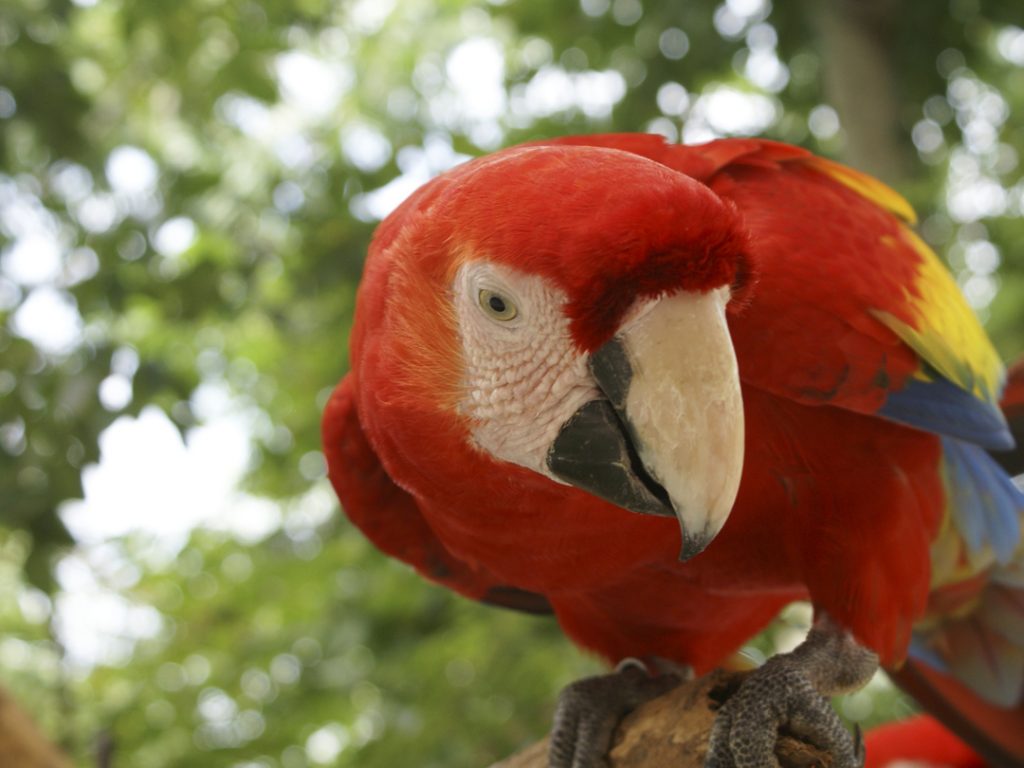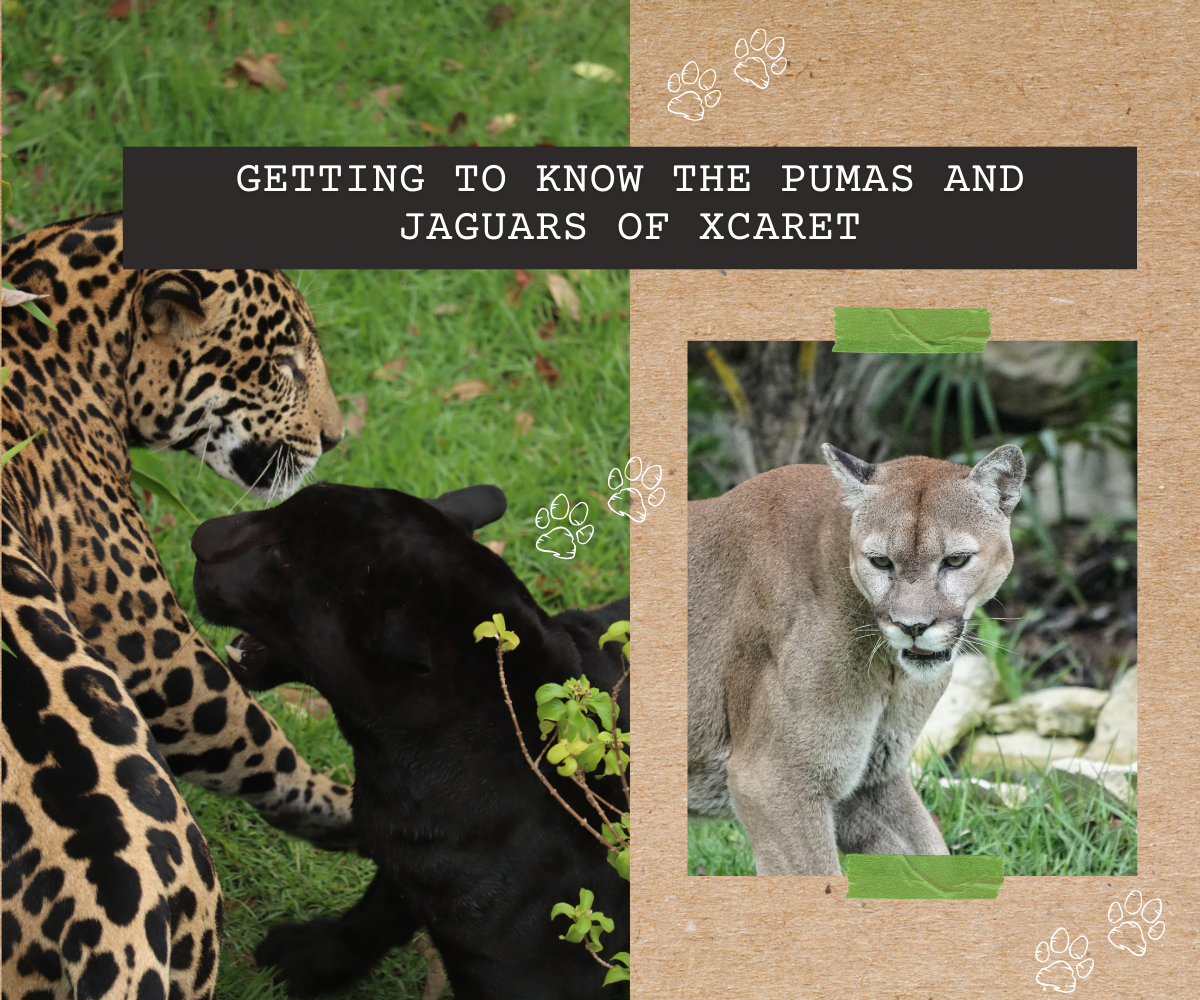FUN FACTS ABOUT FLAMINGOS THAT YOU PROBABLY DIDN´T KNOW
February 11, 2021
LEARN MORE ABOUT FLAMINGOS
It’s difficult, not able to look at them; their captivating color and large wings are truly amazing. Learn more about flamingos and their lifestyle.
In the early decade of Egyptian culture, flamingos represented the god Ra, the sun god. Due to this, everything was done for the preservation of the bird. Their name means “flame', attributed to their fiery red color.
FLAMENCOS OR FLAMINGOS?
What is the correct way to say it?
We have heard both these words to refer to this type of bird. However, there is a difference in meaning.
“Flamenco' refers to two concepts: first to birds and second, to an artistic and cultural dance.
“Flamingo' on the other hand is a word that doesn’t exist in the Spanish language, so it is used in terms of the English language. It means practically the same thing but in a different language.
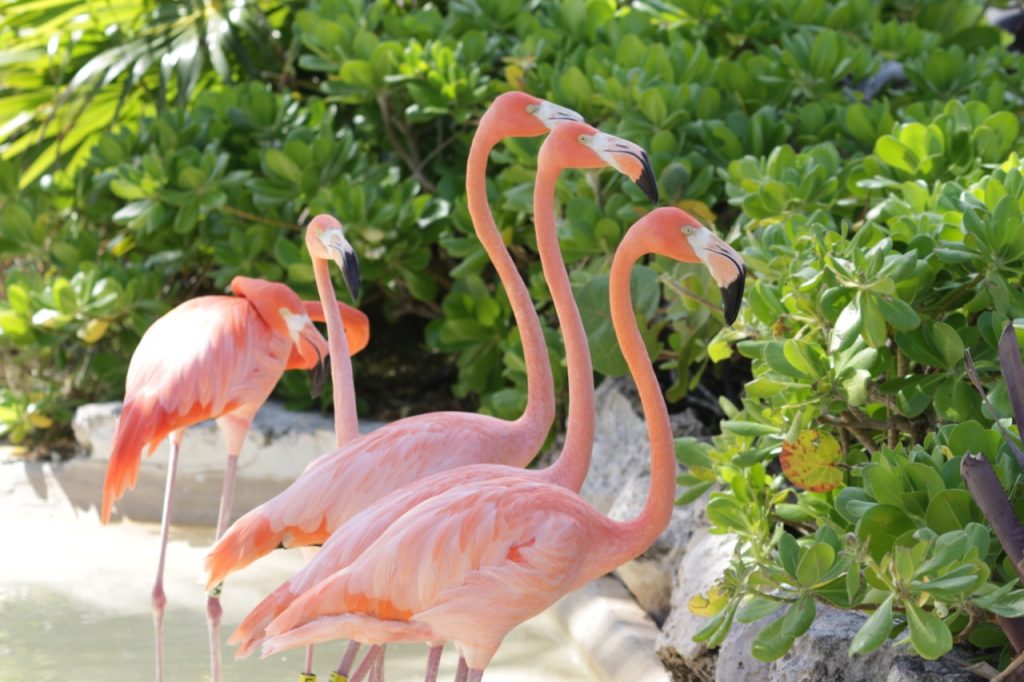
CHARACTERISTICS
- Their height depends on the species to which they belong but the male is generally always taller than the female.
- The maximum speed of a flamingo can reach 35 miles per hour.
- They can fly but normally do so at night.
- Their long and thin legs end between fingers that are joined together by a membrane called the interdigital. This helps them to walk in the mud and use them as paddles swimming.
- They usually rest standing up, normally on one leg, which unconsciously changes position while they sleep. This is due to part of your brain that believes this awake, while the other half is completely at rest.
- They use their curved beaks to filter water to feed. They can submerge their head underwater to move the bottom with their beak and get food.
- Their life expectancy can be as high as 40 years.
- Their eyes are orange in color and are larger than their brain.
- They breathe air, but can surprisingly hold their breath while underwater in search of food.
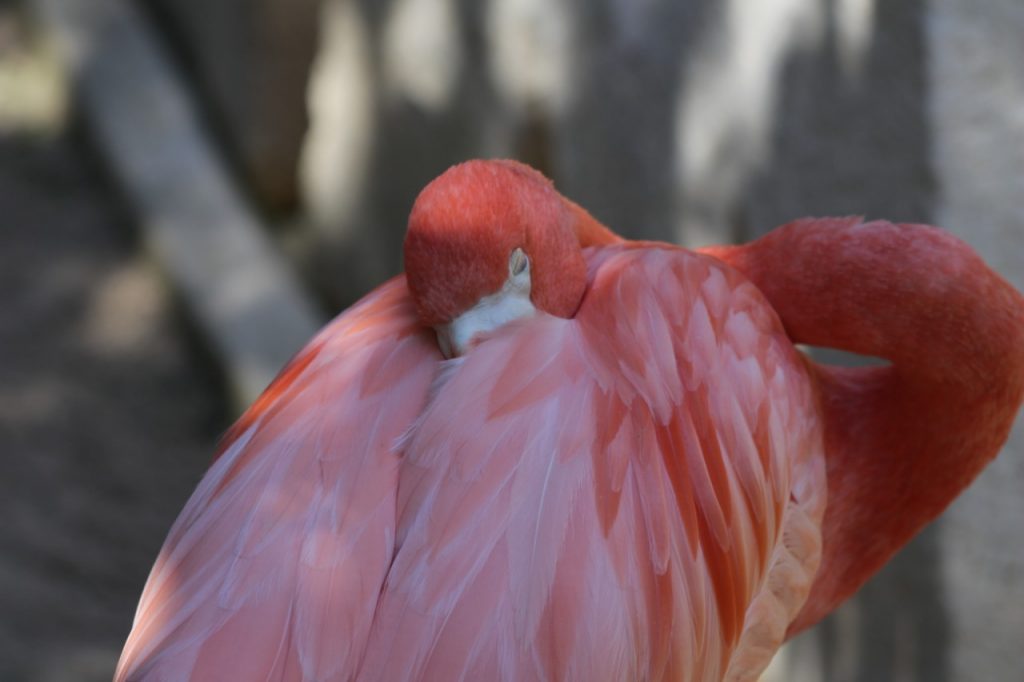
FEEDING
Flamingos have their beaks upside down while feeding for several hours a day, they do so to be able to filter their food while floating on waves of water.
The coloration of a flamingo is not due to a given species.
Their diet consists principally of algae, crustaceans, insects, and plankton. Foods are highly rich in carotenoids. Due to consuming this type of substance, they obtain their natural pigmentation, their characteristic pink plumage.
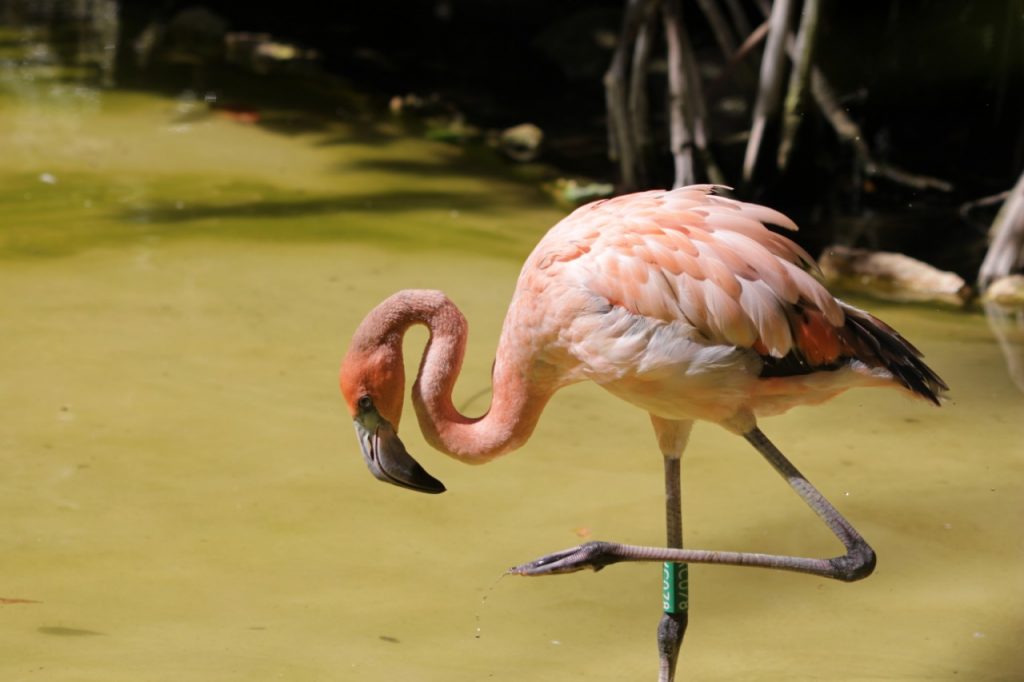
TYPES OF SPECIES
The family of flamingos is named Phoenicopteridae. They all share physical characteristics similar, like their curved beak shape, long legs, palms fingers and pink plumage with tone variations. Taxonomists have discovered that there are currently six species of this type of bird.
Common Flamingo (Phoenicopterus roseus)
- They reside in East India, the coast of the West Indies, Africa, and Florida.
- Their habitat is low-deep coastal lagoons and saltwater, marshes, salt flats, estuaries, coastal waters, and alkaline lakes, but sometimes seen in wastewater treatment areas.
- The adult height is between 1.10 and 1.5 meters, while its weight is 2.4 kilograms up to 4 kilograms.
- Most of its body is pale, while the upper surface of its wings is more intense in tone acquiring a red color. Its plumage is pink.
- They like mud as it allows them to access their food without having to enter the depths of the water.
- They communicate vocally with a type of sound similar to that of geese.
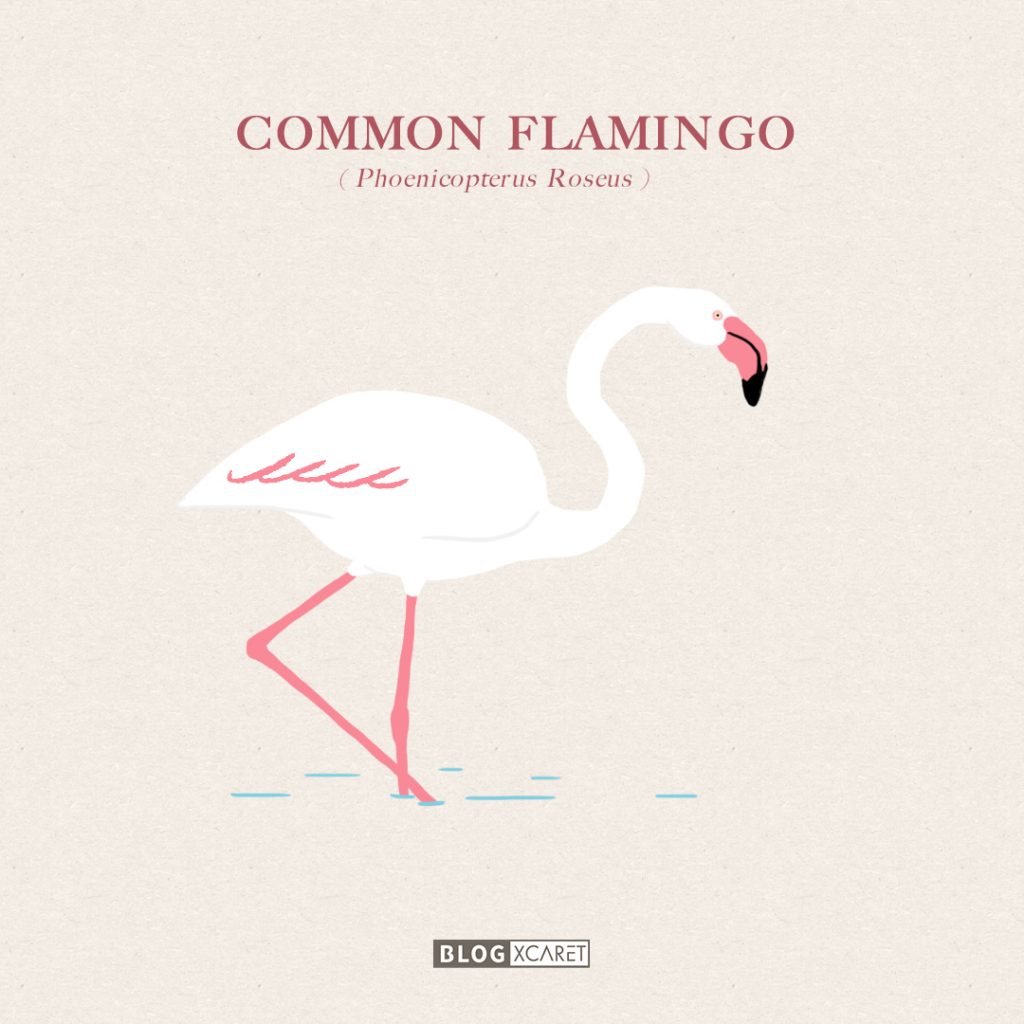
Caribbean Flamingo (Phoenicopterus ruber)
- It resides principally in the Antilles, Yucatán, and along the Galapagos Islands
- The name “Caribbean flamenco' is imprecise because it can found in areas that don’t belong to the Caribbean region
- It’s also known as red flamingo, pink flamingo, and American flamingo
- It’s the only species of flamingo native to North America
- Males are slightly larger than females by up to 20%
- They weigh on average 2.8 kilograms in the case of males and in the case of females an average of 2.2 kilograms of weight.
- They prefer areas of high concentration of salt, so they are usually found inside small lakes and marshes.
- Its average lifespan depends, in the wild, it is usually 40 years and 60 years in captivity.
- Usually, they take walks and groom their feathers. As a symbol of harmony between them.
- They live in warm regions, they don’t usually fly to emigrate unless they need to find food they don’t have.
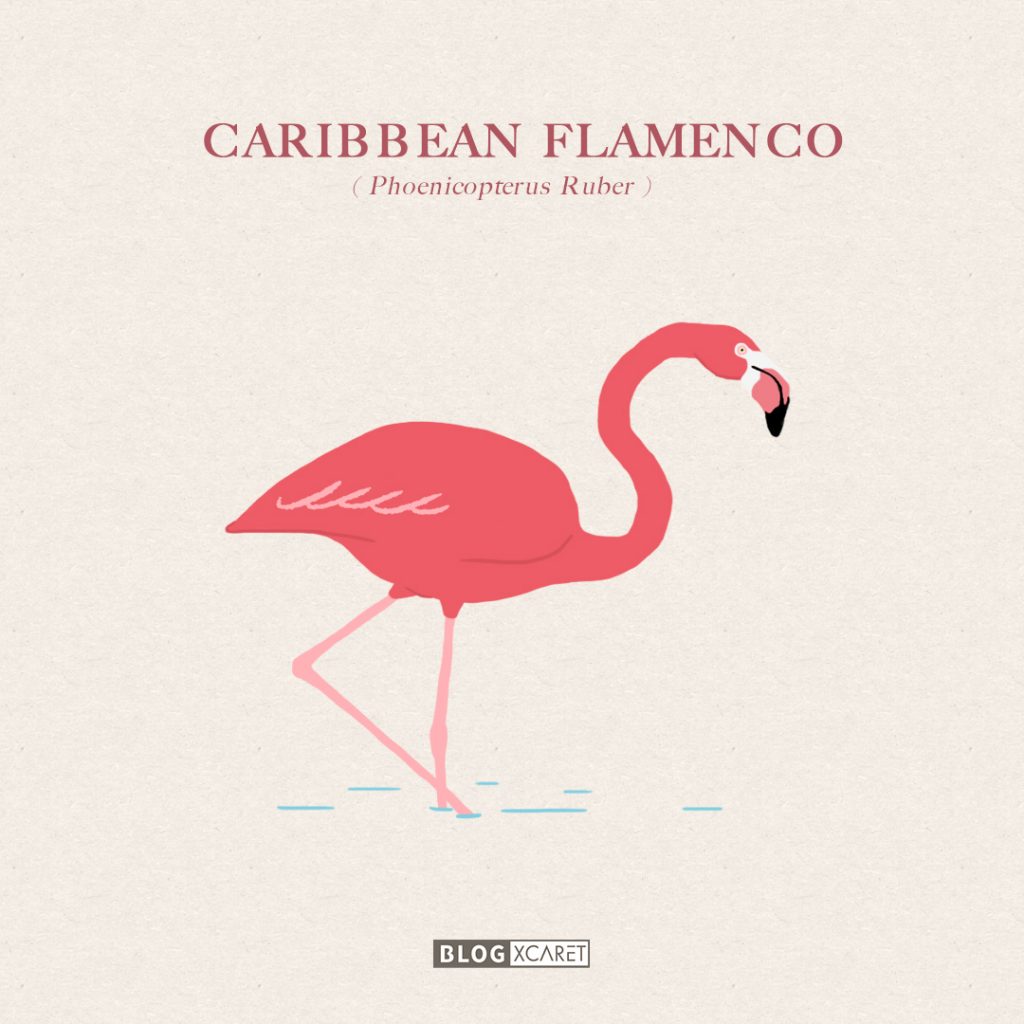
Dwarf flamenco (Phoenicopterus minor Phoeniconaias minor)
- As an adult, he is 90 to 105 centimeters tall and weighs from 1.2 to 2.7 kilograms.
- They´re principally found in Africa, Asia, and India.
- It’s estimated that approximately 4 million of them reside in the world.
- They´re birds that adapt easily, making them reside in captivity easily, and for this reason that they are usually interspersed with another species of flamingos.
- They spend about 20% of the day feeding.
- Their colonies are known to be very noisy.
- Despite being a large species in number, its presence decreases due to floods within its natural habitat, drought, and water pollution.
- Their nests are created in high places to prevent possible floods from destroying them.
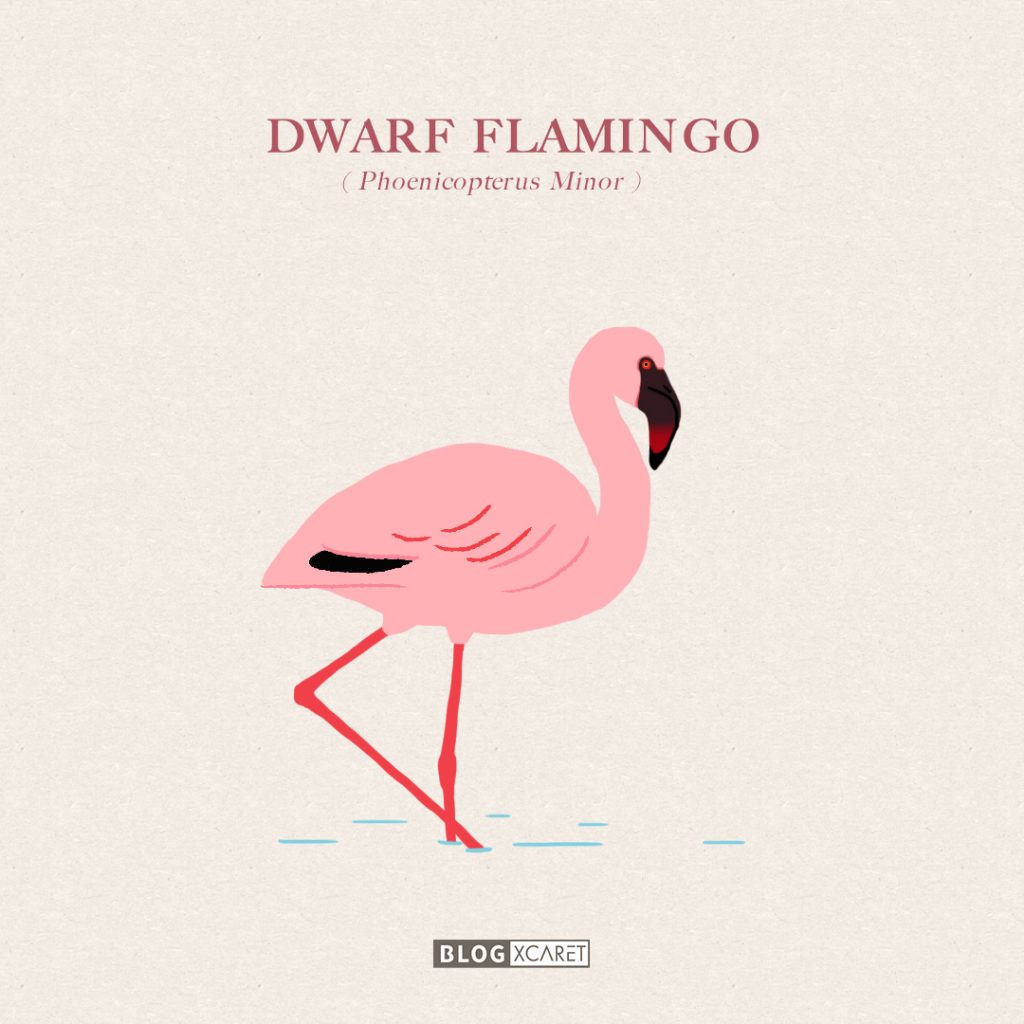
Andean flamingo (Phoenicoparrus andinus)
- It’s a little-known species with a limited range of distribution.
- It has long legs and yellows.
- In adult life it measures between 102 and 110 centimeters; sometimes it can grow up to 140 centimeters.
- It lives in high places, between 2,300 and 4,500 meters above sea level, in saline and alkaline lakes.
- They tend to overwinter at lower elevations.
- They are capable of traveling about 1,126 kilometers per day when they need new sites with an abundance of food.
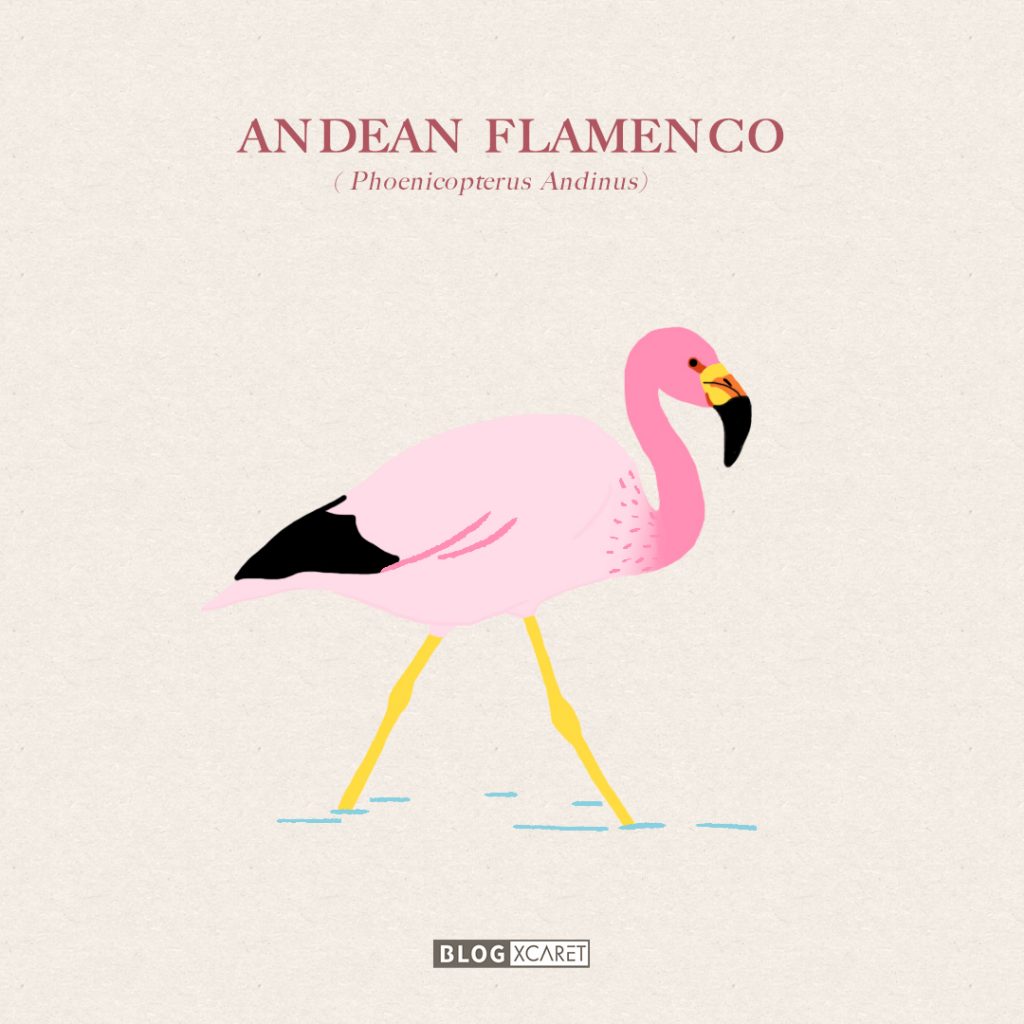
James’s Flamingo (Phoenicoparrus jamesi)
- Adults measure between 90 and 92 centimeters in average length, weighing approximately 2 kilograms.
- The speed of its flight is up to 60 kilometers per hour.
- Its geographical range extends from the extreme south of Peru to the North of Chile and Argentina through the West of Bolivia.
- It lives in the Andean highland region, principally in saline lakes of a soft substrate, low depth, and high alkalinity.
- They can thrive in freshwater bodies.
- It’s considered a seasonal migrant, but most will not move over long distances.
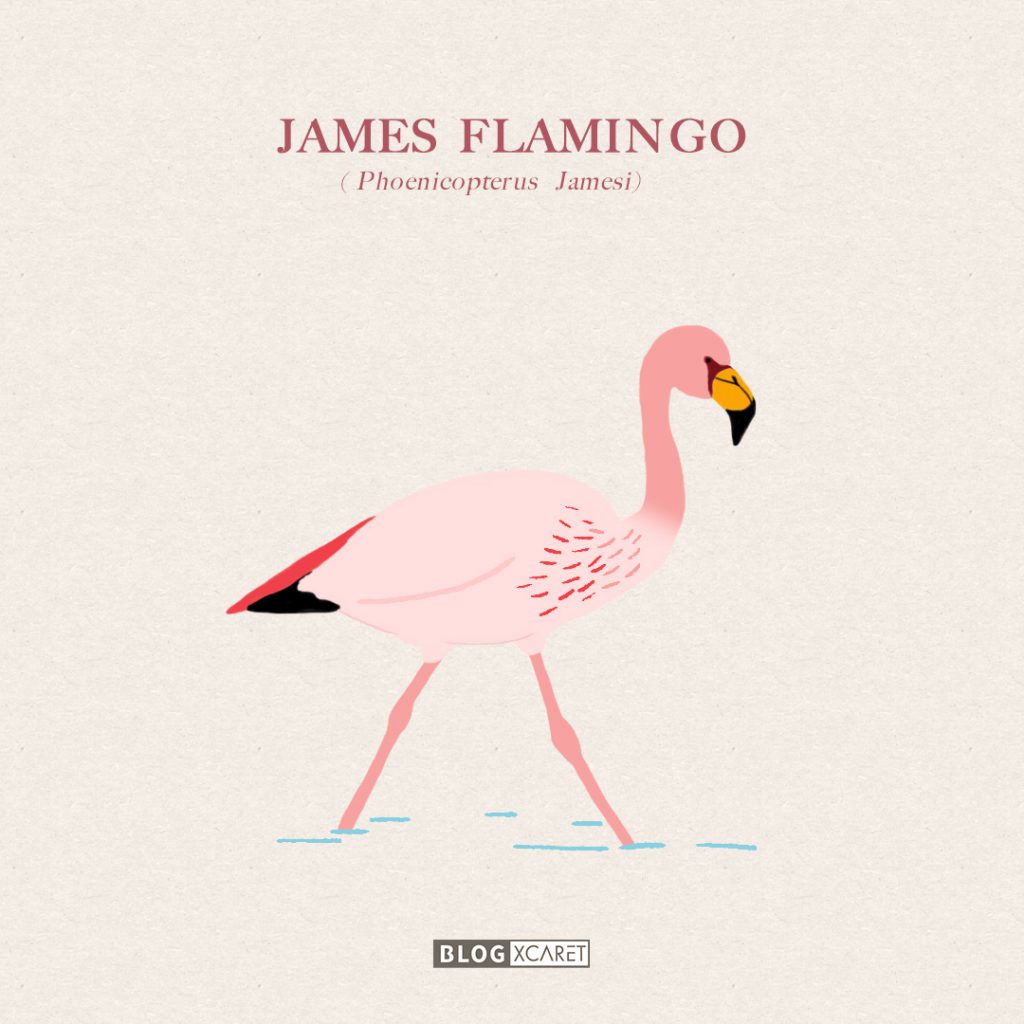
Chilean flamingo (Phoenicopterus chilensis)
- Measures from 80 to 145 centimeters in height and weighs between 2.5 and 3.5 kilograms, in its adult life.
- It lives principally in salt lakes, coastal marshes, estuaries, and lagoons in areas up to 4,500 meters above sea level.
- Its habitat is normally surrounded by arid or desert landscapes.
- Tend to hydrate with fresh water, as they cannot drink saltwater.
- They are considered diurnal animals.
- They spend a lot of time grooming and fixing their feathers due to the cold temperatures where they live.
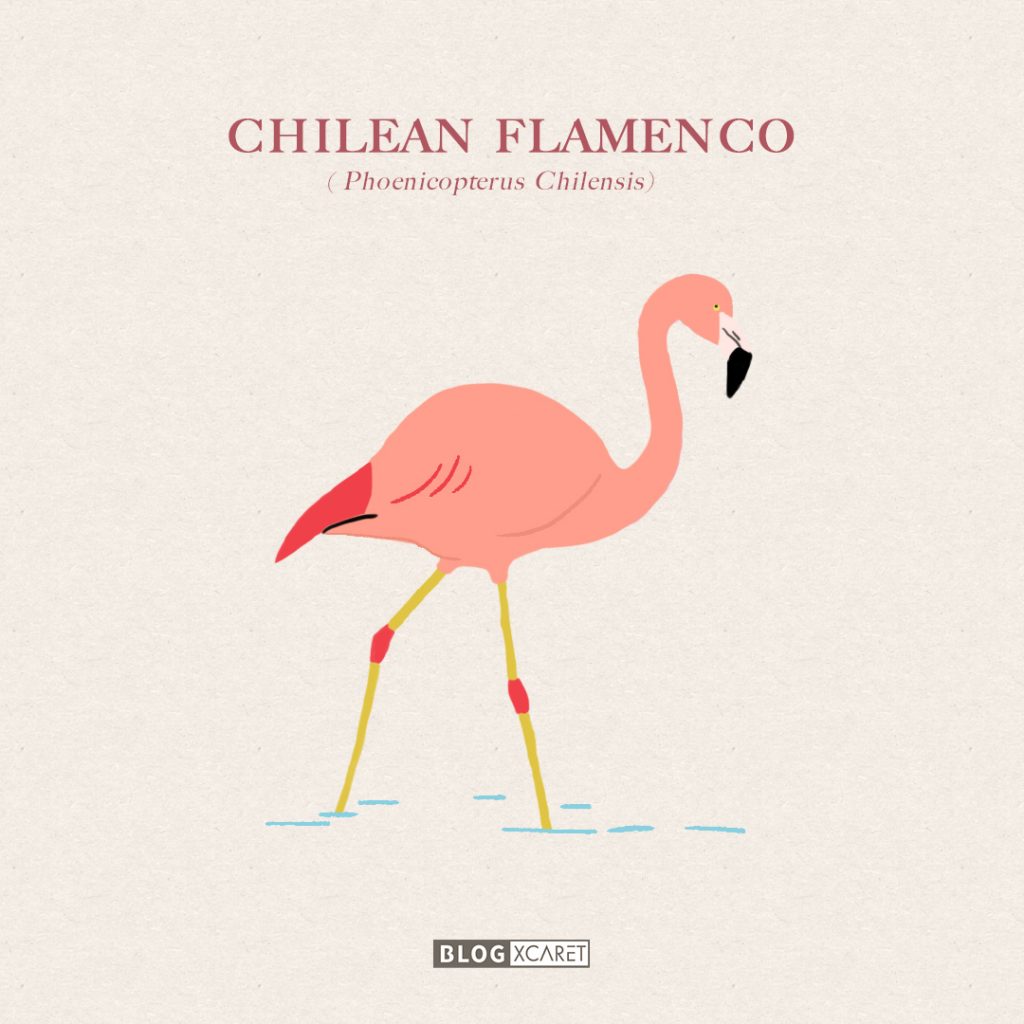
REPRODUCTION
First, they must perform a type of courtship ritual to find their future mate, this ritual includes marches, grooming, turns of the head, and so on; principally the males are who do this type of dance, if the female isn’t impressed, the male must perform their dance repetitively until a female accepts it.
Their mating stage begins after their first six years of life.
When a couple of flamingos mates, their entire colony gets involved.
To create their nests they use materials such as sticks, stones, mud, and even feathers. Creating something like a volcano; reaching 4.7 inches tall.
The female lays only one egg in the nest due to its large size. Its incubation lasts around 30 days.
Flamingo´s babies are born gray or white and take up to three years to reach their plumage of the color they usually have in their adult life.
Usually mate when it rains, because rain helps them to have supplies for the construction of nests and food.
ENDANGERED OF EXTINCTION?
Flamingos aren’t yet considered an endangered type of bird. However, this can happen due to threats from predators, principally humans due to the poaching of the ornamental feathers that these beautiful birds possess. Other factors could be loss of habitat generated for problems such as global warming, pollution, among others.

READ ABOUT:
10 BIRDS YOU CAN SEE IN THE AVIARY OF XCARET
FLYING HOME: ALL ABOUT THE SCARLET MACAW CONSERVATION PROGRAM AT XCARET
Now that you know more about flamingos, I invite you to leave me in the comments your opinion about what you think of this information.

Preservadora de la sostenibilidad y fiel admiradora de la naturaleza. Ama viajar y conocer nuevas cu...

Posts Relacionados
Grupo Xcaret
Hotels


